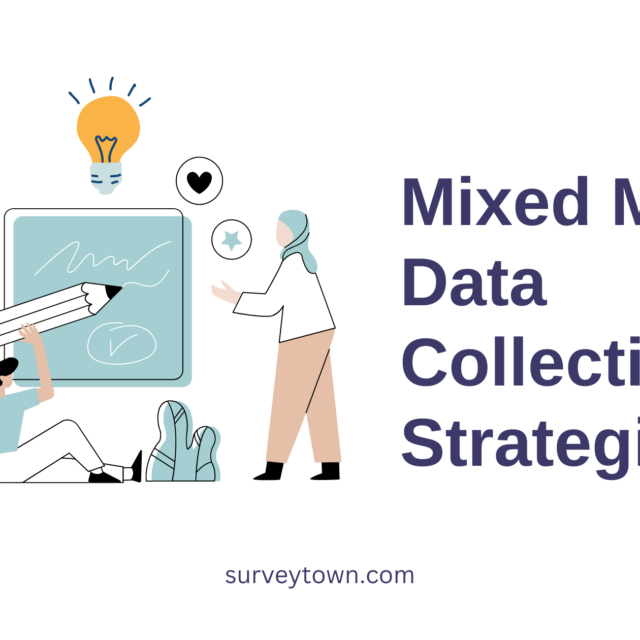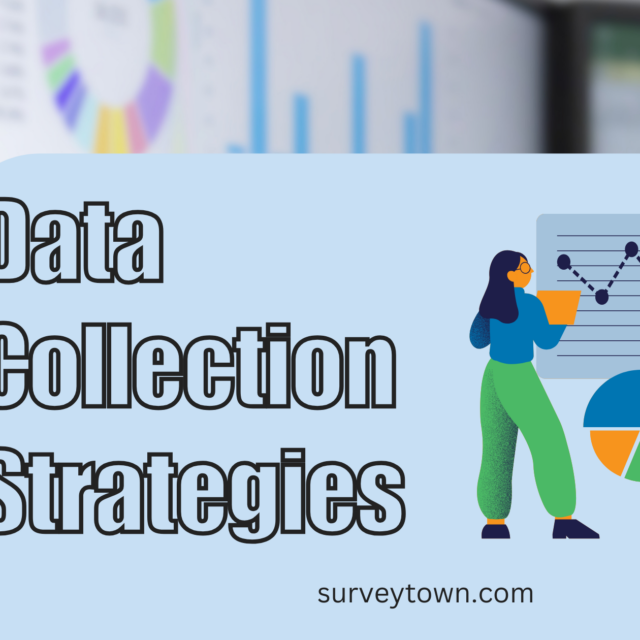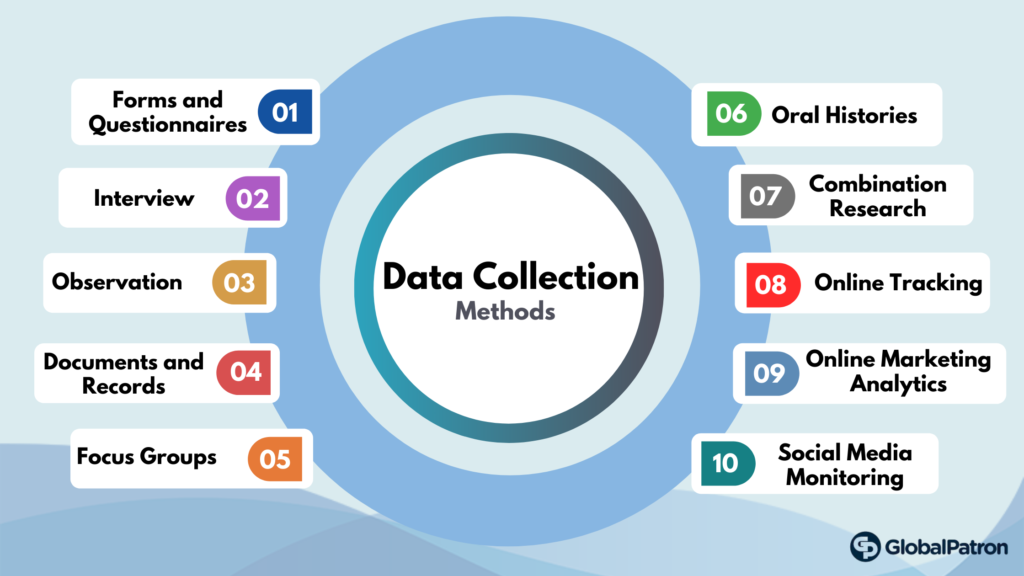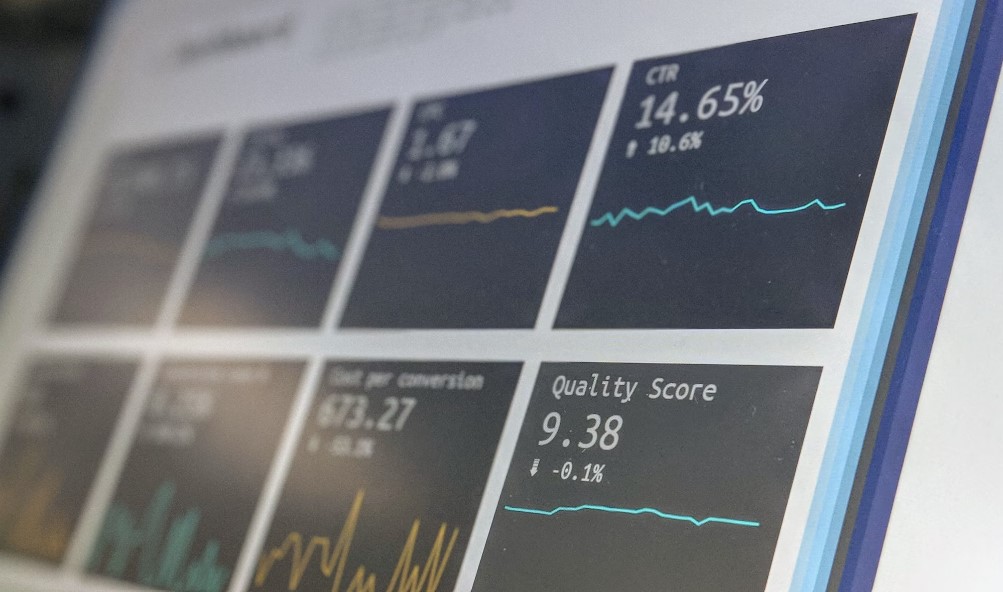Welcome to the captivating world of research, where we unveil the hidden depths of knowledge. Here, mixed methods research reigns supreme as an all-encompassing approach that combines both quantitative and qualitative techniques. By harnessing the strengths of these two powerful approaches, researchers can unlock a profound understanding of their chosen topic.
Read our article on data collection strategies for more info!
Why are mixed methods crucial in research? Because they offer an unparalleled opportunity to explore every dimension of a phenomenon. Imagine having access to numerical data alongside rich narratives and contextual information – it’s like peering into multiple dimensions at once! This integration allows researchers to triangulate their findings, enhancing the validity and reliability of their results. Embrace mixed methods in your study design and open doors to endless possibilities for exploration and discovery. The combination of rigorous statistical analysis with nuanced interpretations paves the way for a comprehensive understanding of complex social phenomena or intricate psychological processes.
Strategies for Collecting Data Using Mixed Methods
Welcome to the world of research, where strategies for collecting data using mixed methods are revolutionizing the way we study and analyze complex phenomena. By combining quantitative and qualitative techniques, researchers can unlock a treasure trove of insights that go beyond what single-method studies can offer. Let’s dive into the fascinating realm of mixed methods research.
Why Mixed Methods Matter:
- Comprehensive Data Collection: Imagine having access to a wealth of rich and diverse data that captures both numbers and narratives. That’s exactly what mixed methods research brings to the table. By harnessing the strengths of quantitative analysis and qualitative exploration, researchers can paint a complete picture of their subject matter.
- Triangulation: In any scientific endeavor, it’s crucial to validate findings from multiple angles. With mixed methods, you have an invaluable tool called triangulation at your disposal. This process involves cross-validating results from different sources or perspectives, bolstering confidence in your conclusions while minimizing bias.
- Enhanced Validity: Single-method studies often face limitations due to their narrow focus or potential biases inherent in one approach alone. However, by embracing mixed methods research, you enhance the validity of your findings through complementary evidence from various vantage points. It’s like fortifying your study with layers upon layers of rigor.
Convergent Design
Imagine a research design that allows you to collect quantitative and qualitative data simultaneously while also conducting separate analyses before merging everything together during the interpretation phase. This approach, known as convergent design, combines the best of both worlds in data collection and analysis methods. It is highly regarded by researchers for its ability to provide a comprehensive understanding of a topic.
Explanatory Sequential Design
Start with quantitative data as your foundation, then follow up with qualitative insights that explain or elaborate on initial findings. This sequential approach adds depth and context to numerical results. It enables researchers to go beyond surface-level explanations by delving into the intricacies and nuances inherent in human experiences or social dynamics.
Exploratory Sequential Design
Begin by immersing yourself in qualitative exploration, then embark on quantitative analysis for further investigation. This design is perfect when you want to uncover hidden gems and then quantify their significance. So, the beauty of it lies in its ability to combine these two distinct approaches harmoniously.
Transformative Design
If you’re passionate about creating social change, this design is your ally. By iteratively blending quantitative and qualitative components, you can drive transformative impact through research. The transformative design is particularly effective because it acknowledges that social change requires more than just numbers or stories alone—it demands a holistic approach.
By leveraging these diverse designs within mixed methods research, you have the freedom to tailor your approach based on your unique goals and objectives. The possibilities are endless!
In a nutshell, mixed methods research empowers researchers with comprehensive data collection, validation through triangulation, and enhanced validity. It’s like having a multidimensional lens that reveals the intricate details of complex phenomena. In our next section, we’ll delve into practical strategies for collecting data using mixed methods in research – so stay tuned!
Choosing the Right Strategy for Your Research
When it comes to conducting research and collecting data using mixed methods, selecting the right strategy is absolutely crucial. The strategy you choose will depend on a variety of factors, including your specific research goals and objectives. In this section, we will delve into the key considerations when choosing a strategy and provide expert guidance on how to align your research goals with the most appropriate approach.
- Research Goals: Begin by clearly defining your research goals. Are you aiming to gain an in-depth understanding of a particular phenomenon or seeking statistical generalizability? By understanding your objectives, you can determine whether a qualitative, quantitative, or mixed methods approach would be most effective.
- Resources: Evaluate the resources available to you, such as time constraints, budget limitations, and access to participants or data sources. Different strategies may require varying levels of resources; therefore, it’s essential to select one that aligns with what you have at hand.
- Expertise: Take into account both your own expertise and skills as well as those of your team members or collaborators. Certain strategies may necessitate specialized knowledge in specific techniques or software tools. It’s important to choose an approach that matches the level of expertise within your team.
- Ethical Considerations: Always consider any ethical implications related to data collection methods and participant involvement throughout every step of the process. Ensure that your chosen strategy adheres strictly to ethical guidelines while safeguarding participant confidentiality and privacy.
Qualitative Focus
If delving deep into subjective experiences or comprehending complex phenomena from multiple perspectives is central to your research aims, employing qualitative methods such as interviews, focus groups, observations, or content analysis would be highly beneficial.
Quantitative Focus
If achieving statistical generalizability is vital for accurately answering your research questions, quantitative approaches like surveys/questionnaires can be used in conjunction with statistical analyses such as regression models or ANOVA tests.
Mixed Methods Approach
A mixed methods design combines the strengths of both qualitative and quantitative data collection methods. This approach allows for a comprehensive understanding of the research topic by capturing both subjective experiences and statistical patterns. It is particularly useful when you want to triangulate findings or explore unexpected relationships between variables.

Common Mistakes to Avoid When Selecting a Strategy:
- Neglecting Research Goals: Never choose a strategy solely based on convenience or familiarity. Always prioritize your research goals and select an approach that aligns seamlessly with them.
- Overlooking Resource Constraints: Be realistic about the resources available to you, including time, budget, and expertise. Opting for a strategy that demands more resources than what you have at your disposal can compromise data quality or result in incomplete analysis.
- Ignoring Ethical Considerations: Ensure that your chosen strategy upholds ethical guidelines and safeguards participant rights throughout the entire data collection process.
By thoughtfully considering these factors and aligning your research goals with the most appropriate strategy, you will be equipped to collect high-quality data using mixed methods in all of your research endeavors.
Mastering the Analysis and Interpretation of Mixed Methods Data
Congratulations on successfully collecting data using mixed methods in your research! Now, let’s dive into the crucial step of analyzing and interpreting that data. In this section, we will equip you with expert techniques and strategies to effectively analyze and interpret the valuable insights gathered through mixed methods.
1. Unleashing the Power of Data Analysis
To begin your analysis journey, it is essential to organize your data systematically. Take a moment to structure your findings by creating spreadsheets or databases for quantitative data, transcribing qualitative interviews or focus group discussions meticulously, and categorizing different types of information.
When dealing with the quantitative component of your study, leverage statistical software like SPSS or R to conduct descriptive statistics (e.g., mean, standard deviation) as well as inferential statistics (e.g., t-tests, ANOVA). These powerful analyses will help you uncover patterns or relationships within numerical data that can shape your understanding.
For qualitative data analysis, consider employing thematic analysis—a widely recognized approach. By identifying recurring themes or patterns across participants’ responses and coding them accordingly, you can extract rich insights from open-ended responses or narratives.
One remarkable advantage of mixed methods research is its ability to combine both quantitative and qualitative approaches seamlessly. Capitalize on this strength by comparing findings from each methodological strand—seek convergence when both approaches yield similar results or explore divergence when they offer contrasting insights. This holistic perspective provides a comprehensive understanding of your research question.
2. Unlocking Insights Through Effective Interpretation
Interpretation should not be confined solely to the final stage; instead, it should permeate throughout every phase of your research process. Continuously compare findings between quantitative and qualitative strands as new insights emerge—this integration at different stages enhances the depth of interpretation.
Identify areas where quantitative results complement qualitative findings (or vice versa) to reinforce the validity and reliability of your conclusions further. By doing so, you can paint a more accurate picture of the phenomenon under investigation.
Mixed methods research often uncovers unexpected or contradictory results. Embrace these surprises as they may lead to new avenues for exploration and generate novel hypotheses for future studies. These unanticipated findings have the potential to revolutionize your field of study.
To provide a comprehensive understanding, contextualize your data within the broader social, cultural, or environmental context in which your research is situated. Reflect on how these factors may influence your findings and enrich their meaning.
3. Presenting Your Findings With Impact
Effectively presenting your findings is crucial for conveying the significance of your research. Utilize visual aids such as graphs, charts, tables, or diagrams to visually represent quantitative data—these powerful tools enable readers to grasp complex information at a glance.
Incorporate direct quotes from participants’ qualitative responses to support and enrich your interpretations—these illustrative quotes add depth and authenticity to your findings while establishing a connection with readers on an emotional level.
When presenting qualitative data, go beyond mere summaries by providing detailed descriptions of participants’ experiences or perspectives. This humanizes your research and allows readers to empathize with those involved in the study.
Acknowledge any limitations in your study design or methodology that might impact the generalizability of your findings—it demonstrates transparency and strengthens the credibility of your work. Additionally, discuss the practical implications of your results and how they contribute to existing knowledge in the field—this showcases both academic rigor and real-world relevance.
Case Studies Revealing Successful Mixed Methods Data Collection
Welcome to our exploration of successful mixed methods data collection strategies. In this section, we will delve into real-life case studies that offer valuable insights and demonstrate how different approaches can be applied to your own research endeavors.
Case Study 1: The Impact of Technology on Education
In this study, researchers aimed to understand the influence of technology on student learning outcomes in a high school setting. To collect comprehensive data, they employed both quantitative surveys and qualitative interviews with students and teachers. While the survey provided information about technology usage, the interviews allowed for deeper discussions on the benefits and challenges associated with integrating technology into education. By combining these two methods, researchers gained a holistic view of the topic.
Case Study 2: Exploring Customer Satisfaction in Retail Stores
This study focused on understanding customer satisfaction levels in retail stores while identifying areas for improvement. Researchers utilized a mixed methods approach by conducting quantitative observations and qualitative focus groups. Through observations, they collected numerical data such as wait times at checkout counters or product availability. Meanwhile, focus groups provided customers an opportunity to share their experiences, opinions, and suggestions regarding store services.
Case Study 3: Assessing Employee Engagement in Organizations
In this case study, researchers sought to assess employee engagement levels across various industries within organizations. They employed a combination of quantitative surveys distributed among employees and qualitative semi-structured interviews conducted with managers or team leaders. Surveys measured factors like job satisfaction and motivation levels, while interviews delved deeper into specific issues affecting engagement within each organization.
Lessons Learned From These Case Studies:
- Comprehensive Understanding: Combining quantitative and qualitative methods allows for a more comprehensive understanding of complex research topics by providing statistical evidence (quantitative) alongside rich contextual insights (qualitative).
- Triangulation: Mixed methods research enables researchers to triangulate data from different sources, validating findings and increasing overall study reliability.
- Method Alignment: The choice of methods should align with research objectives and questions. Selecting appropriate strategies that effectively capture desired information is crucial.
- Flexibility in Data Collection: Flexibility in data collection techniques allows for a nuanced exploration of research topics. Researchers can adapt their approach based on emerging themes or unexpected findings.
These case studies exemplify how mixed methods data collection enhances research outcomes by providing a deeper understanding of complex phenomena. By combining quantitative and qualitative approaches, you can gather robust evidence while capturing the richness of human experiences. Apply these strategies to your own research endeavors and unlock new insights that contribute to your field’s knowledge base.




